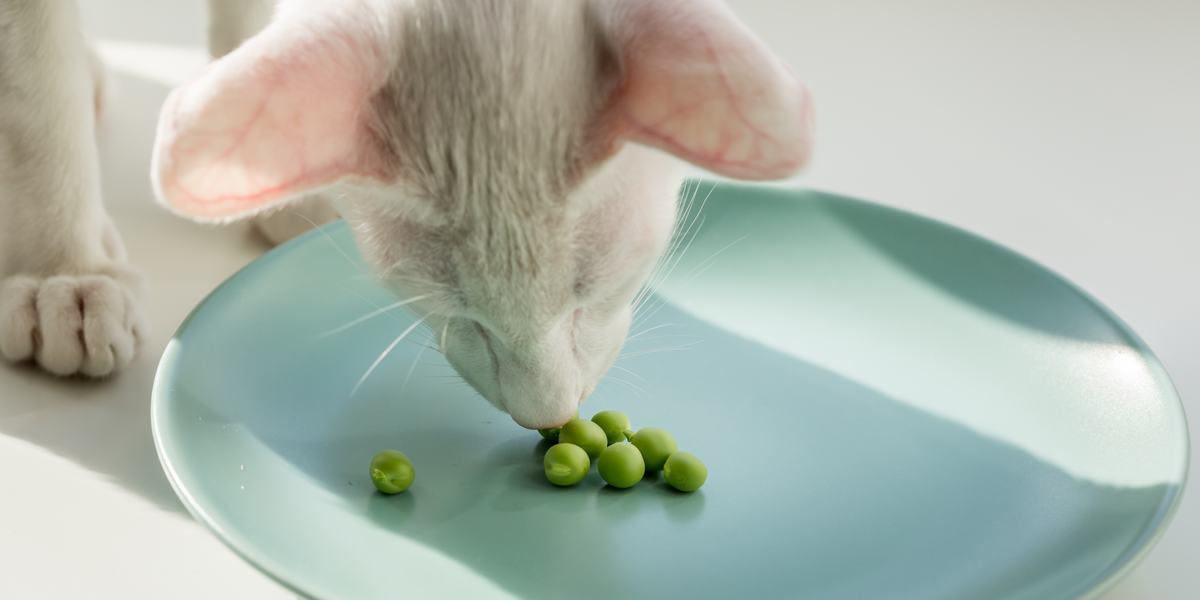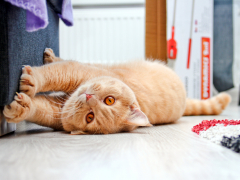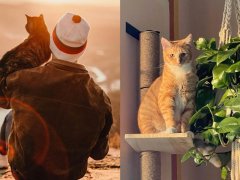
Green beans, soybeans, lima beans, jelly beans…there are many different kinds of beans, all with different nutritional values and health benefits for our digestive system and more.
Even lentils are considered part of the bean family. But are these legumes suitable as cat food? Can cats eat beans?
The short answer is that yes, cats can eat beans. They are not known to be toxic, which will be a relief to cat owners. However, cats eat a meat-based diet preferably, and excessive amounts of beans and veggies can cause digestive issues. Read on to find out if cats eat green beans and more!
Overindulging in beans can result in digestive problems or pancreatitis, so if you want to offer beans, always give them in small amounts, and not too frequently.Quick Overview: Can Cats Eat Beans





Summary of Content
Cats are obligate carnivores, and their digestive system is designed specifically to digest meat. Cat food is generally highly meat-based.
Our cats have a high protein requirement, with low carbohydrate needs, and need their diet to provide very specific nutrients that they cannot make themselves.
Cats struggle to digest plant material and legumes, so although some of the nutritional value of beans may suit them well, such as the high protein and fiber, they will struggle to digest them well enough to get many of the health benefits.
Do Cats Like the Taste of Beans?
As obligate carnivores, cats love fish and animal protein. However, many cats are curious and like to try new flavors and textures in their food, so some cats eat all sorts of extras.
Benefits of Beans for Cats
Beans should not be the main part of a cat’s diet, but they can provide a source of protein and fiber. Cats need a diet rich in protein, and fiber is essential for a healthy digestive system and to prevent constipation.
Beans also provide many vitamins, minerals, and antioxidants. Cats are obligate carnivores and should mainly eat animal protein, but small amounts of beans can provide some nutritional value.
How Many Beans Can a Cat Eat?
Vegetables and legumes should ideally only make up a small part of your cat’s overall diet. Providing small amounts of beans is fine, as cats eat a varied diet, but too large a portion can result in an upset to the digestive system.
How Often Can a Cat Eat Beans?
Cats are designed to digest animal protein, and providing legumes such as baked beans, black beans, green beans or other legumes too frequently can cause digestive distress, including excess gas, intestinal discomfort, or pain. Feeding small amounts occasionally is the safest way to let your cats eat beans.
Also Read: Gastroenteritis In Cats: Causes, Symptoms, & Treatment
Are Beans Used in Commercial Cat Food?
Beans are sometimes used in commercial cat food, particularly in grain-free or high-protein formulas. Brands may include legumes such as peas, chickpeas (garbanzo beans), lentils, or green beans as sources of plant-based protein, fiber, and carbohydrates. Some brands that use beans in their formulas include ACANA, Applaws, and Open Farm.
While these ingredients can provide additional nutrients and serve as alternative carbohydrate sources, it’s important to note that cats are obligate carnivores, and their primary nutritional needs are best met through animal-based proteins
Are Beans Bad for Cats?
Although beans are generally a safe food for cats in small quantities, there are a few types of beans to be avoided.
Canned Beans
These should be avoided as cat food. They often contain added seasonings – mainly salt. Too much salt is very bad for our feline friends and can lead to an imbalance in sodium and potassium levels, causing harm to the kidneys. Cats who have eaten too much salt can develop excessive thirst, diarrhea, and vomiting. It can even lead to death.
Jelly Beans
These are candy, rather than a legume, and can contain artificial sweeteners such as xylitol. This is toxic to cats as it causes their sugar levels to drop dangerously and can be fatal. This human food should never be part of a cat’s diet.
Baked Beans
These can also contain artificial sweeteners such as xylitol, which can be toxic to your cat’s health.
Coffee Beans and Chocolate-Covered Beans
Coffee beans and chocolate beans both contain theobromine, which is toxic to cats. It can induce excitability, a high heart rate, liver Failure, and seizures and can be fatal.
Refried Beans
Cat owners should take care with refried beans, as they are very high in fat. They can also contain seasonings such as onions and garlic which are toxic to cats.
Raw Beans
Beans should always be cooked properly before being given as cat food. Raw beans can cause severe digestive distress.
Other forms of beans are generally safe to give in small quantities. Overindulging in beans can result in digestive problems or pancreatitis, so if you want to offer beans, always give them in small amounts, and not too frequently.
Frequently Asked Questions
Is it OK for cats to eat baked beans?
The beans themselves are safe in small quantities, but some baked beans will contain the sweetener xylitol (otherwise known as birch sugar) which is toxic for cats, so care must be taken to avoid this.
What food is toxic to cats?
Some human foods should be completely avoided in cats: onions and garlic, chocolate, alcoholic drinks, grapes and raisins, citrus fruits, and the sweetener xylitol.
Can cats eat peas and beans?
Cats can eat small amounts of freshly cooked peas and beans, but only in small quantities and not as a major part of their diet.
Can cats eat beans and rice?
Cats can safely eat small portions of beans and rice, as long as they are freshly cooked and not given in large portions.







